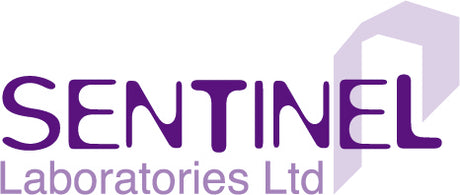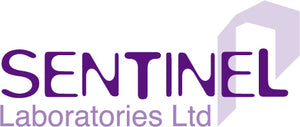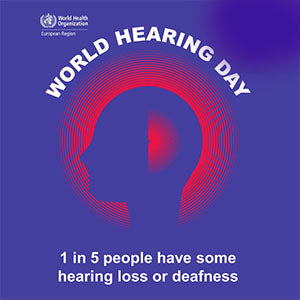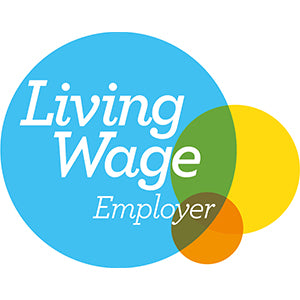19 Things You Need to Know Regarding the PPE Regulation
The new Personal Protection Equipment (PPE) Regulations are quite straight forward and do not change the responsibilities for end-users. Though, you may still have questions regarding the safety equipment you’re purchasing. We have put together the following guide of the most frequently asked questions regarding the new PPE regulations for you to use as a quick reference.

What are the New Personal Protection Equipment Regulations?
The new PPE regulations detail new responsibilities all manufacturers distributors and importers of PPE products must follow. The additional/revised rules include a new definition of PPE, new classifications of products, additional testing and certification requirements, and added responsibilities for all economic operators in the PPE supply chain. As an end-user, your only responsibility is to be aware of the requirements to ensure the safety equipment you purchase complies with the new regulations that ensure optimal health and safety for your workers.
What Are The Main Changes to the PPE Regulation?
We highly recommend taking the time to thoroughly read through the new requirements set forth in the new PPE Regulation. However, as a crash course, the main changes include a new definition of Personal Protective Equipment, new classifications of PPE products, additional testing and certification requirements, and added responsibilities for all economic operators in the PPE supply chain.
Some additional changes to make note of include:
- The new Regulation was changed from a Directive to a Regulation
- The scope is larger
- New responsibilities for economic operators which includes manufacturers, suppliers and distributors
- The EU declaration of conformity must be easily accessible for Market Surveillance
- More detailed conformity assessment procedures that require a risk assessment process and post-market surveillance
- Requirements must be compliant at all times, including during the formal claim substantiation process
- 5 year validity certificates
- PPE products must be traceable via the traceability system
- Single point of contact must accompany the product
- Additional requirements for notified bodies
- Old directive will be withdrawn on April 21, 2019
Why is there a New PPE Regulation?
Great question! After all, you’re likely wondering if the older products you still have in-house are safe to use – and yes, they are (as long as they follow the previous regulations).
The new PPE Regulations were put in place to ensure all manufacturers, suppliers and importers comply with the new safety measures. These regulations make it easier for dangerous PPE products to be detected and removed from the market, which brings trust and safety back into the entire PPE industry as a whole.
For end-users, this means that you can trust the PPE products you’re purchasing because any “bad” PPE products would have already been found and taken off the market. The new rules make it difficult for lower grade products to slip through the system.
What is the Objective of the New PPE Regulation?
The new Regulation was put in place to make it easier to detect and remove dangerous products from the market. It was also designed to:
- Improve traceability
- Reinforce market controls
- Deliver a collaborative system for marketing surveillance
What Does Traceability Mean?
One of the main reasons for the revised Regulation is to make it easier to remove dangerous PPE products from the market. Traceability means that all PPE products must have:
- A traceable history
- Market surveillance authorities must be able to find the liable economic operators
- Market surveillance authorities must be able to obtain evidence of product compliance
The requirements include labeling the PPE products and identifying economic operators in the distribution chain. This is crucial to make note of, as if public authorities recall products and are unable to distinguish between lot numbers, all products of that type must immediately be removed from the market. This can be detrimental and costly to your business.
Are Distributors Obligated to Keep Track of Lot Numbers for Products Sold?
All distributors must have their own traceability system put in place that allows them to keep track of lot numbers per products sold. Even if you sell to another economic operator, whether a reseller or another distributor, you need to know which products/batches of products are going where. 
Do Manufacturers Need to Identify Type, Batch or Lot Numbers of PPE Products?
Yes. Manufacturers of PPE products must identify the PPE with a clear link to the technical documentation that shows the conformity of that specific type of PPE. This can be done by adding the use of a product designation, and by adding the name and address of the manufacturer’s address onto the product.
Does the New PPE Regulation Requite a Date of Obsolescence?
As for the date of obsolescence for PPE products subject to aging, it doesn’t need to be mentioned on the product itself but it is recommended. However, if the product is not marketed itself, the packing must have the date of obsolescence which, according to the new regulation, includes the month and year of production, and/or the month and year of obsolescence.
If the PPE products are not affected by aging, you are not required to mention a date of obsolescence.
Does the new PPE Regulation Affect My Company?
The new PPE Regulations only impact economic operators, which includes PPE manufacturers, importers, and distributors. If you are an economic operator, you must ensure all PPE products are fully compliant with the new requirements.
As an end-user, your responsibilities don’t change.
What Does the New PPE Regulation Mean for Distributors?
Prior to distributing any PPE products, you must verify that each product contains the correct markings as per the new PPE Regulation. This includes all certifications, cover designs, and marketing of PPE products. The new rules also mean that you will want to avoid putting any non-compliant products on the market, and any products found to be non-compliant must be reported to the competent authorities.
When Does the New Regulation Go into Effect?
The regulations went into full effect on April 21, 2019. Any PPE product certificates that already have the old PPE directive will be valid until April 21, 2023 or until they expire. Any new PPE products will need to be certified specific to the new regulation and new EN374 standards when it’s time to update old certificates, but this must be done prior to April 21, 2023, regardless.
What Areas Is the New PPE Regulation Applicable?
The new Personal Protective Equipment Regulations are applicable in all EU countries, including Iceland, Norway, Lichtenstein, Turkey and Switzerland.

About Ansell’s PPE Products
Now that you understand the details of the new PPE Regulation, you may be wondering how Ansell safety products come into play. Here are your most commonly asked questions and the answers you’re looking for.
What Has Ansell Done to Support the New Regulation?
Amazing question! Ansell has already made all necessary changes required by the new PPE Regulation, despite the deadline being 2023. We support the new efforts put in place to ensure safe work equipment available on the market, we wanted to take initiative which resulted in us making the changes immediately.
Additionally, Ansell’s Global Regulatory Compliance Director, Guido Van Duren, was actively involved in the discussion regarding the changes. He is the former president of ESF and was one of the vital members in the discussions with the Commissions to ensure optimal safety measurements and PPE products.
Are There Requirements for Products That Are Purchased in Bulk but Sold in Smaller Quantities?
It is common practice to purchase PPE products in bulk and then sell them in smaller quantities. This may have caused some questions to arise regarding whether there are requirements needed to ensure the smaller quantity of products have the proper USE/CE markings. For example, if the supplier of your PPE products has marketed the case of products, but not the individual products.
If you are a distributor of PPE products, you are obligated to ensure the marking and documents are available with each first commercial packaging. If the original packing is altered, you must make sure that the new PPE is still in compliance.
If Distributors Sell PPE Products to a Country that Speaks a Different Language, Who Is Responsible to Provide Relevant Language?
All manufacturers, importers and distributors are obligated to ensure that all PPE products are provided with the IfU in a language that can be easily understood by end-users. This is determined by the Member States.
What if the Language Translation is “Bad” or Done Incorrectly?
You’ve decided to take the initiative and make the translations. You’ll want to ensure all information mentioned in the IfU is clear and understandable, as bad translations are considered to be non-compliant and will not be accepted.
Are EU Type Examination Certificates Invalid if Alternations Are Made?
Manufacturers must be informed and asked for a formal acceptance prior to making any changes, whether a repair, new logo, tags, etc.). Depending on the response, it is then the manufacturer’s responsibility to assess and accept (or refuse) the response. If accepted, the manufacturer needs to clearly describe the alterations in the technical file of the manufacturer.
What is the EU Declaration of Conformity?
The new PPE Regulations require that any PPE products must be accompanied with the EU Declaration of Conformity (EU DoC), which requires an internet address to be detailed in the Instructions for Use where the EU DoC can be accessed.
Additionally, the EU DoC must be available in all EU languages that are required by Member States.
Can a Distributor Return Unused PPE Products if the Packaging Is Unopened?
Any opened PPE products cannot be returned, as the integrity of the PPE is immediately affected once taken out of the packaging. However, if the PPE product is not opened, distributors can return the product. Though, the products must be in the original packaging and the packaging must be in good condition. More importantly, it is still up to the manufacturer or distributor to decide whether they will accept or refuse such returns.
In order to ensure compliance with the new PPE Regulations, we highly recommend taking time to thoroughly read through the documentation. However, these questions and answers are a great place to start that inform you of some of the most vital information for PPE manufacturers, suppliers and importers, as well as end-users.
All Ansell PPE products have already been updated for full compliance. So, if you’re looking for a trusted brand that you don’t have to conduct an abundance of research on to ensure it follows the new PPE Regulation, shop Ansell safety products today on Sentinel Laboratories.





Leave a comment